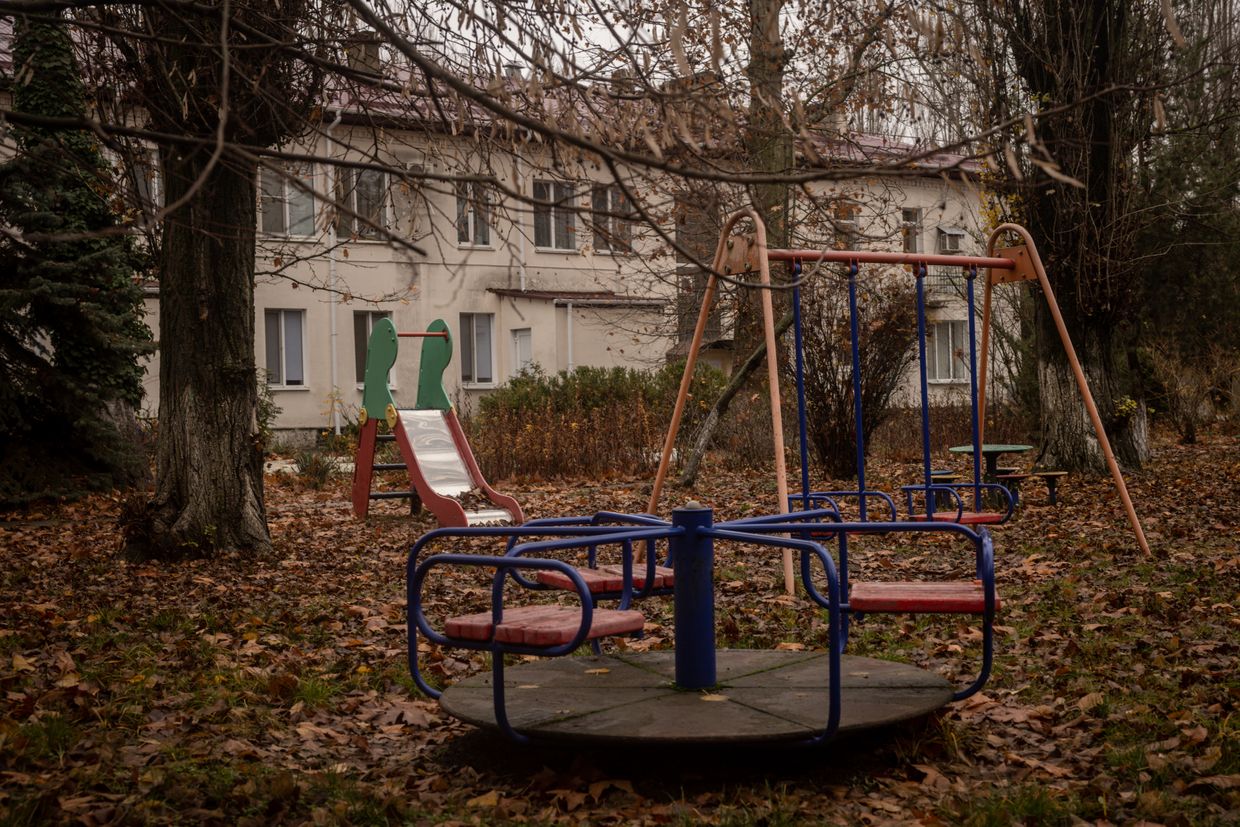Editor’s note: The story was updated with additional information.
Russian occupation authorities in Ukraine created an online “catalog” where Ukrainian children are offered up for adoption while sorted based on physical traits like eye or hair color, a head of a Ukrainian NGO said on Aug. 6, denouncing the practice as child trafficking.
The database, which includes data on 294 children, is available on the education department of the Russian occupation authorities in Luhansk Oblast.
“Most children in this catalog were born in Luhansk Oblast before the Russian occupation and had Ukrainian citizenship,” Mykola Kuleba, CEO of the Save Ukraine organization, said in an Instagram post.
“Parents of some of them were killed by occupation authorities, others were simply issued Russian identification documents to legitimize their abduction.”
The news underscores the impact of Russian aggression against Ukraine on the country’s most vulnerable groups, namely children.
Ukraine has identified more than 19,500 children abducted by Russia during the full-scale war and forcibly transferred to Russia, the Russian-occupied territories of Ukraine, or Belarus. Only 1,480 have been brought back home.
Ukrainian officials estimate the real figure of abducted children could be far higher. Ombudsman Dmytro Lubinets puts the number at up to 150,000, while Presidential Commissioner for Children’s Rights Daria Herasymchuk has given a range of 200,000–300,000.
Kuleba said that many children who grew up in territories occupied by Russia since 2014, including Crimea and parts of the Donetsk and Luhansk oblasts, have been “systematically deported and transferred to Russian families in Moscow and other Russian regions.”
“This isn’t a new tactic. Since 2014, Ukrainian children have appeared in Russian adoption databases. However, since 2022, the practice has become widespread and systematic,” Kuleba noted on X.
“Initially, Russian authorities tried to cover their tracks — shutting down registries and erasing references. Now, the pretense is gone.”
Screenshot from the website of the Russian occupation authorities in Luhansk Oblast, where Ukrainian children are offered up for adoption. (Save Ukraine/Telegram)
Screenshot from the website of the Russian occupation authorities in Luhansk Oblast, where Ukrainian chilren are offered up for adoption. (Save Ukraine/Telegram)
The Russian-run database describes the children listed in the database as “orphans and children left without parental care.” The website allows users to filter the children by age, eye and hair color, and the preferred form of guardianship, such as adoption or foster care.
Children are introduced with their photos, age, gender, and character traits, with some being described as “obedient” or “calm.”
“The way they describe our children is indistinguishable from a slave catalog. This is child trafficking in the 21st century, and the world must act to stop it immediately,” Kuleba said. According to him, the database is part of an effort to “improve” the system in the face of dropping demand for adoptions.
Russia has “streamlined” the system to such an extent that “a Ukrainian child can now be effectively ‘ordered’ online” and “stripped of their identity, issued a Russian passport, and subjected to ideological control” with a “single click,” the NGO head said.
The platform exposes the children to significant dangers, including sexual exploitation, human trafficking, illegal adoption, forced changes of name and identity, psychological trauma, and trafficking for organ harvesting, he warned.
Talking to the Kyiv Independent, Save Ukraine’s head of communications, Nataliia Savchenko, said Russia began deleting photographs after the platform was exposed, but the Ukrainian NGO downloaded information about the children listed on the website and will hand over all relevant information to Ukrainian authorities.
“At the moment, we are working together with them to determine the whereabouts of these children and to do everything possible to bring them back to Ukrainian-controlled territory,” the spokesperson told the Kyiv Independent.
The database “should serve as evidence in the investigation of crimes committed by Russia. In this case, we are talking about human trafficking — specifically, the trafficking of children,” she said.
Save Ukraine is a charitable organization founded in 2014 to support vulnerable groups, namely orphans and children rescued from Russian-occupied territories.
The Kyiv Independent has reached out to Ukraine’s children’s rights officials for comment.
The abductions of Ukrainian children have been broadly denounced by the international community as a war crime. Their return has remained a central demand in Ukraine’s negotiations with Moscow.
During peace talks in Istanbul, Russian officials dismissed Kyiv’s appeal to return the abducted children as a “show for childless European old ladies,” even as they admitted to relocating hundreds, President Volodymyr Zelensky said.
In March 2023, the International Criminal Court issued arrest warrants for Russian President Vladimir Putin and Children’s Commissioner Maria Lvova-Belova, citing their personal roles in organizing the illegal transfers.
What it’s really like being Black in Russia
After facing police discrimination as a Black woman in the U.S., Francine Villa decided to return to her birth country, Russia, in 2019, searching for the safety America had denied her. A year later, she appeared in a Russian propaganda documentary “Black in the USSR,” saying that she “felt free” in Russia and could “walk outside and be safe.” But that illusion shattered in July, when she and her child were brutally attacked by neighbors who shouted racial slurs at them. “How much more of thi
